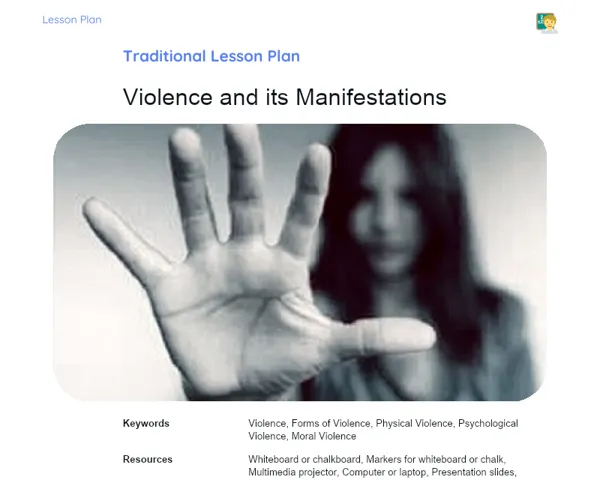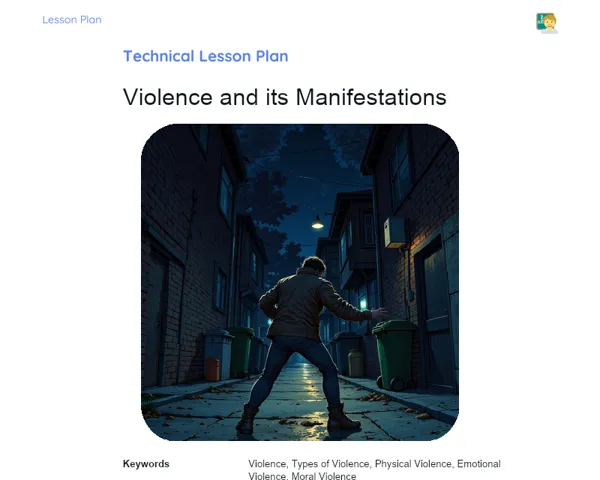Lesson Plan | Socioemotional Learning | Classics of Sociology
| Keywords | Sociology, Durkheim, Marx, Weber, Socio-emotional Methodology, RULER, Self-awareness, Self-control, Responsible Decision-Making, Social Skills, Social Awareness, Guided Meditation, Social Facts, Historical Materialism, Social Action, Socratic Debate, Emotional Regulation, Reflection |
| Resources | Comfortable seating, Quiet space for meditation, Whiteboard and markers, Reading materials on Durkheim, Marx, and Weber, Paper and pens for note-taking, Timer or clock to manage activity duration, Audio device for guided meditation (optional) |
| Codes | - |
| Grade | 12th grade |
| Discipline | Sociology |
Objective
Duration: (15 - 20 minutes)
The purpose of this phase is to introduce the key authors of Sociology and their ideas, while also focusing on the socio-emotional growth of the students. By recognizing, understanding, labelling, expressing, and managing emotions, students will be better equipped to deal with feelings that emerge when engaging with challenging topics, fostering a healthier and more collaborative classroom environment.
Objective Utama
1. Introduce the main authors of Sociology: Durkheim, Marx, and Weber, highlighting their contributions to the development of social sciences.
2. Enhance students' ability to identify and understand the emotions associated with grappling with complex sociological theories.
3. Encourage the skill of expressing and managing emotions during debates and discussions regarding the authors' ideas.
Introduction
Duration: (15 - 20 minutes)
Emotional Warmup Activity
Guided Meditation: Concentration for Sociology
The suggested emotional warm-up activity is Guided Meditation. This practice aims to enhance students' focus and concentration, emotionally gearing them up for the study of the foundational texts of Sociology.
1. Prepare the environment: Ask students to sit comfortably in their chairs, with their feet flat on the floor and hands resting on their laps.
2. Explain the activity: Inform students that guided meditation will assist them in focusing and being present for the class, helping to ease potential anxieties.
3. Start the breathing: Ask students to close their eyes and take deep breaths. Guide them to inhale deeply through their noses, holding the breath for a few seconds, and then to exhale slowly through their mouths.
4. Guide the visualization: Encourage students to envision a calm and safe place where they feel at peace. Whether it’s a beach, a forest, or any other serene spot, they should imagine themselves there.
5. Maintain focus: During the meditation, gently prompt students to keep their attention on their breathing and the sense of calm that their chosen place brings to them.
6. Gently conclude: After about 5-7 minutes, invite students to start moving their hands and feet slowly, open their eyes gently, and transition back into the classroom environment.
Content Contextualization
The classics of Sociology, such as Durkheim, Marx, and Weber, are not merely names in textbooks; their theories help us understand the functioning of modern societies. For example, studying Marx provides insight into the roots of many social inequalities we face today. When bringing these concepts into the classroom, it's vital to acknowledge that each student may have different emotional responses as they confront these realities. Some may feel energised to engage with social issues, while others could feel daunted by the complexity involved.
To make learning more relevant, relating sociological concepts to students' daily lives is essential. For instance, when discussing Durkheim's notion of 'anomie', we can connect it to how the absence of clear norms in certain modern contexts can lead to feelings of disorientation. Additionally, by recognising the emotions that surface in these discussions, students can cultivate greater empathy and social awareness, which are key elements for harmonious coexistence in society.
Development
Duration: (60 - 75 minutes)
Theory Guide
Duration: (30 - 35 minutes)
1. Émile Durkheim: Social Facts: Durkheim introduced the concept of social facts, which are ways of acting, thinking, and feeling that exist outside the individual and exert a compelling influence over them. Anomie: A social condition where the norms that guide social interactions become unclear or are completely absent, leading to a sense of disorientation. Example: The spike in suicide rates during economic downturns, when social norms are disrupted.
2. Karl Marx: Historical Materialism: Marx posits that social changes and the structures of society emerge from material and economic conditions. Class Struggle: The history of societies is marked by the conflict between oppressor and oppressed classes. Example: The industrial revolutions and their impact on workers and employers.
3. Max Weber: Social Action: Weber describes social action as any human behaviour that has meaning when viewed in relation to the behaviours of others. Ideal Types: Conceptual framework used for analysing facets of society. Example: The Protestant ethic and the spirit of capitalism, where Weber examines how Protestant ethics influenced the evolution of capitalism.
Activity with Socioemotional Feedback
Duration: (30 - 35 minutes)
Socratic Debate on Classics of Sociology
Students will be divided into different groups, with each group tasked with defending the ideas of one of the classic sociological authors (Durkheim, Marx, or Weber). The objective is to stimulate a debate that allows students to express their emotions, refine their social skills, and appreciate diverse sociological viewpoints.
1. Divide the class: Separate students into three groups, each responsible for one of the authors: Durkheim, Marx, or Weber.
2. Distribute tasks: Each group should explore the main ideas of their assigned author and formulate arguments to defend them.
3. Prepare for the debate: Allow groups 10 minutes to organise their arguments and appoint a spokesperson.
4. Conduct the debate: Each group will have 5 minutes to present their initial arguments.
5. Rebut and discuss: After initial presentations, invite open questions and rebuttals among the groups.
6. Conclude with reflections: Encourage each group to reflect on the emotions they experienced during the debate and how the ideas of the sociologists can be applied in real life.
Discussion and Group Feedback
After the debate, use the RULER method to facilitate a group discussion focused on socio-emotional feedback:
Recognize: Ask students to share the emotions they experienced during the debate and encourage them to observe their peers' feelings. This encourages self-awareness and empathy.
Understand: Explore the reasons behind these emotions, highlighting how the complexity of the topics or the challenge of defending a viewpoint can provoke varied feelings.
Name: Prompt students to accurately identify the emotions they felt, which may include frustration, excitement, nervousness, etc.
Express: Provide students guidance on how to express their emotions constructively during academic discussions. This could involve speaking calmly and respectfully, even if they hold strong opposing views.
Regulate: Discuss methods to manage intense emotions, such as deep breathing, taking breaks, and maintaining positive self-talk. This will aid students in handling challenging scenarios in the future.
Conclusion
Duration: (20 - 25 minutes)
Reflection and Emotional Regulation
For the reflection and emotional regulation activity, suggest students write a paragraph discussing the emotional challenges they faced during the class and how they managed these feelings. Alternatively, promote a group discussion where students can share their experiences and emotion regulation strategies. Urge them to be candid and to consider how their emotions influenced their understanding of the topics covered.
Objective: The intent of this section is to foster self-assessment and emotional management, assisting students in identifying effective strategies for navigating challenging situations. By contemplating their emotional experiences, students can enhance their self-awareness and improve their emotional management in both academic and personal settings.
Glimpse into the Future
To round off the class, encourage students to set personal and academic goals related to the content explored. This could involve a brief written exercise where each student lists one or two specific, realistic goals that resonate with the concepts of Durkheim, Marx, and Weber, as well as addressing aspects of socio-emotional development, such as honing argumentation skills or boosting empathy in discussions.
Penetapan Objective:
1. Gain a better understanding of the theories of Durkheim, Marx, and Weber and their practical implications.
2. Cultivate debate and evidence-based argumentation skills.
3. Enhance the ability to identify and manage emotions during challenging discussions.
4. Foster empathy and understanding of diverse perspectives.
5. Utilize sociological concepts to analyse contemporary social issues. Objective: The aim of this section is to empower students’ autonomy and practical application of their learning, encouraging them to articulate and pursue objectives that advance their academic and personal growth. By setting clear goals, students can direct their efforts more effectively and continually, ensuring consistent progress in their grasp of the classics of Sociology and in developing socio-emotional competencies.



